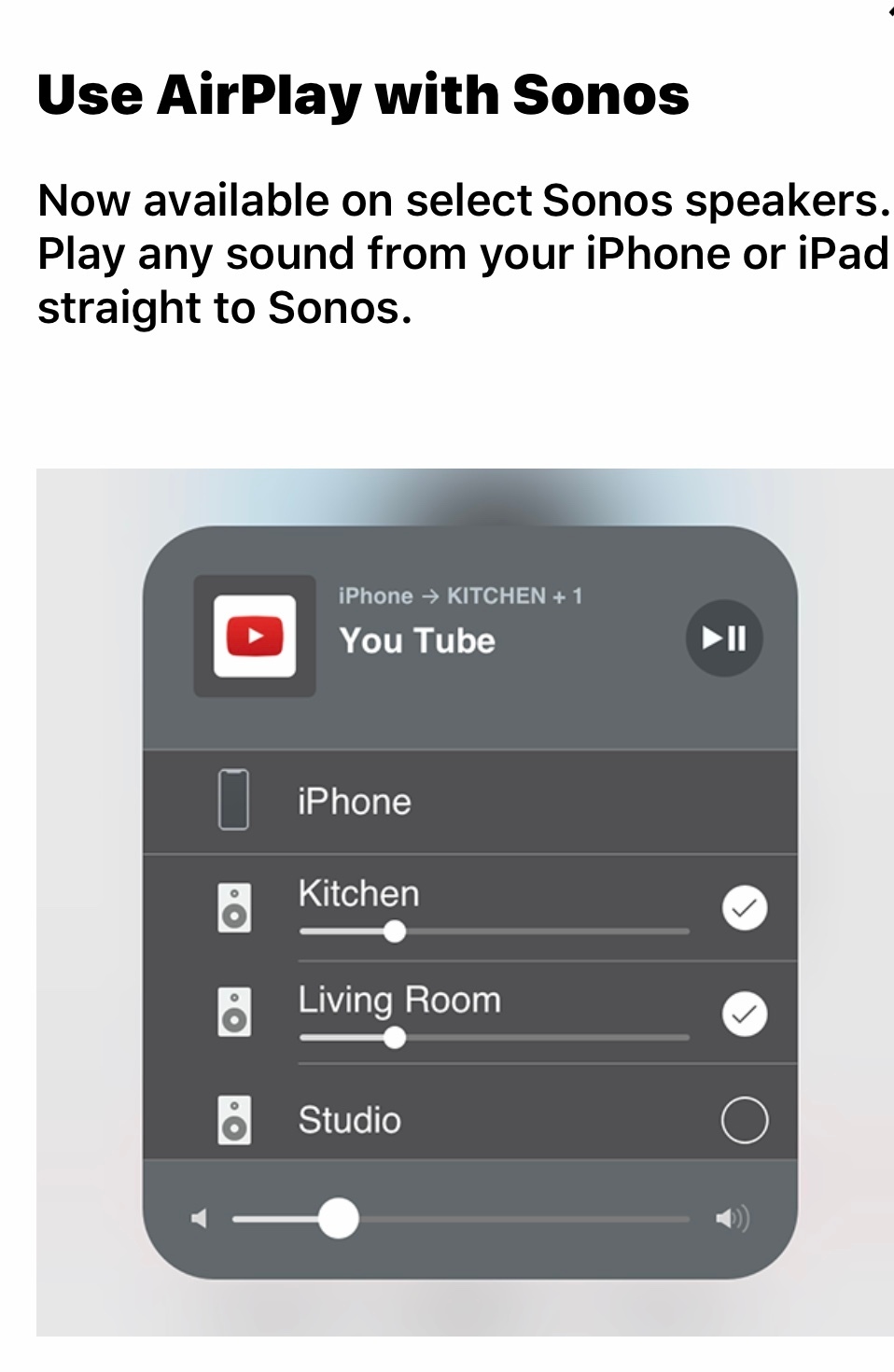On the following page (https://support.sonos.com/s/article/1230?language=en), it says this new feature works with Beam, One, Playbase, and Play 5.
Then, it says:
You can also group any other Sonos speaker with an AirPlay 2 compatible Sonos speaker for multi-room playback.
If that’s the case, then a Play 1 would receive the sound when it’s networked with a compatible speaker.
Given that, I just don’t understand why the Play 1 doesn’t work by itself alone with AirPlay when it’s just a firmware update. I received that update, so why not use it on all speakers?
Answered
Clarify new iPhone Airplay 2 for “any other Sonos speaker”?
Best answer by Chris
Lets say you have a Gen2 Play:5 which will show up in Airtunes. So you play music to the Play:5 in airtunes and the play:5 will now start playing. Then say you want to have a Play:1 also play that stream … then go into sonos app and group the Play:1 with the Play:5 and therefore the Play:5 will send its sound also the the Play:1.
So you can group a non-compatible Airplay speaker to a compatible speaker so it plays along with the compatible speaker (you have to group in the sonos app).
So you can group a non-compatible Airplay speaker to a compatible speaker so it plays along with the compatible speaker (you have to group in the sonos app).
This topic has been closed for further comments. You can use the search bar to find a similar topic, or create a new one by clicking Create Topic at the top of the page.
Enter your E-mail address. We'll send you an e-mail with instructions to reset your password.



